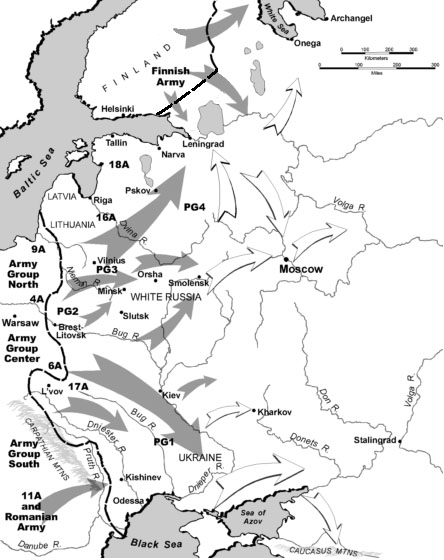 Source: Operation Barbarossa corrected border, Wikimedia.
Source: Operation Barbarossa corrected border, Wikimedia.
Operation Barbarossa was the code name for the German Invasion of the Soviet Union during World War II. Operation Barbarossa was one of the largest invasions in the history of warfare.
In June of 1941 Hitler and the Nazi party had become confident in their decision to open up World War II to the eastern front. Below is a map of their original plan.
 Source: Operation Barbarossa corrected border, Wikimedia.
Source: Operation Barbarossa corrected border, Wikimedia.
Hitler expected there to be an early surrender from the Soviet troops. What he got was the exact opposite: a series of long, drawn out battles as the Soviet Union held their ground and their territory.
The Battle of Stalingrad was one of the most important and possibly one of the bloodiest battles in history, with combined casualties estimated at more than 1.5 million. As the Germans planned their attack on the city, the Soviet leader, Josef Stalin, ordered that Stalingrad must not fall. Following these orders, the Soviet troops defended the city fiercely. The Soviets carried out a counter-attack that eventually trapped and destroyed the German Sixth Army. The Soviet victory at Stalingrad caused the Germans to be pushed back towards the West, allowing the Soviets to advance on Berlin from the East.
The invasion of the Soviet Union and the Battle at Stalingrad marked a turning point in World War II, and Germany would never recover from the loss. They had underestimated their opponent and paid dearly for it. The following cause and effect activity will help to explain the defeat of the Germans more clearly.